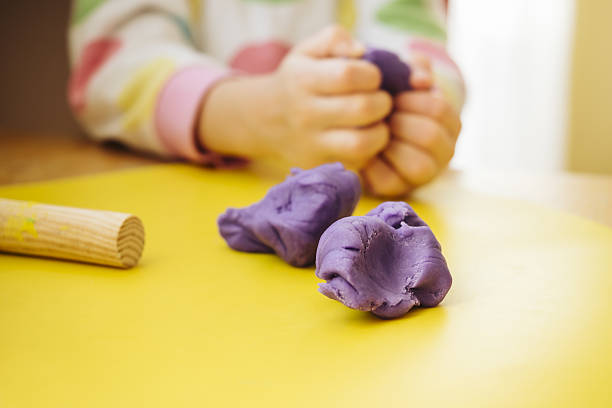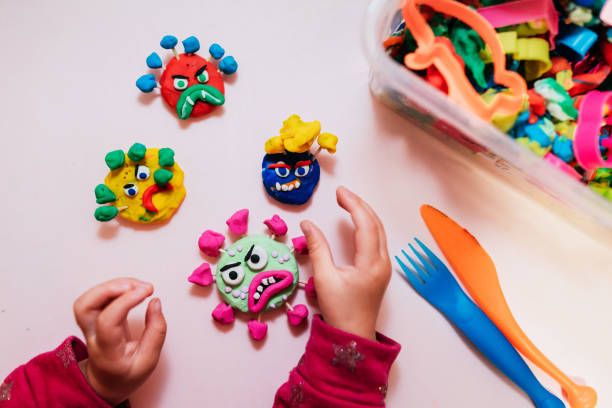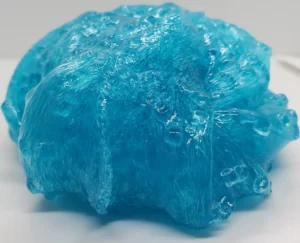
How to soften Playdough (Play-Doh) With 5 Easy Way
Each and every person enjoys playing with playdough, regardless of age. Everyone enjoys using playdough to create forms and sculptures, whether they are adults or children. The problem is that it dries so quickly. Salt, water, and flour are the main ingredients of playdough, which dries out quickly. It implies that you can no longer shape it as you like. How exactly to soften playdough and can you rehydrate your playdough so you can resume playing?
By adding the proper amount of water, Playdough may be easily softened. Even if your playdough is hard and no longer elastic as it once was, adding moisture can revive it and make it soft and elastic once more.
Playdough is an untidy but artistic material. Unfortunately, if kept in an open container, it quickly dehydrates. Applying certain tips and tactics to rehydrate it is preferable to throwing it out. Your playdough will be prepared for reuse with only a little time and effort.
You can use a few quick and simple methods to get your playdough back to its original softness. Simply adhere to the easy instructions provided in this article.
Table of Contents
Why Is My Playdough Hard?
For kids, playdough is a pleasant game. They have unlimited creative freedom. Playdough production is a simple procedure. It is made out of flour, salt, and water. While flour and some food coloring are added to the playdough to give it the right texture, salt stops children and microbes from eating it.
Playdough can occasionally become too sticky or too dry to work with. Let’s examine the causes of playdough’s stickiness or dryness.
Leaving In The Open
Playdough is entertaining, but if it’s left in an open container, it can quickly dry out. This occurs as a result of the air in our immediate environment evaporating the playdough’s moisture content and leaving behind hard bits of salt and wheat.
Taking In Excessive Moisture
The most imaginative approach to keep your kids entertained is using playdough. However, the playdough might get sticky if it takes in a lot of water from the environment. You can take care of this issue at home by adding enough flour. Simply a small amount of flour and thoroughly combine. Your playdough will have a brand-new texture that is excellent. See more about How To Make Playdough Soft Again?
How to soften Playdough?
With Kneading Method
The quickest and simplest way to rehydrate Play-Doh is this. This is the right way to do it when kneading the dough via the article.
- Place the dried dough in a bowl or other container, or on a clean, firm surface.
- Drop by drop, add water to the dough. You can add up to a teaspoon of water at a time for larger batches of dough. If the dough is not in a container, be careful not to add too much water so that it runs all over the place.
- Play with the dough once it has begun to absorb the water. The water will absorb and work through the dough more effectively if you knead, roll, fold, and squash it together. Between adding more water, play with the dough for 10 to 20 seconds.
- Work the dough continuously until it softens. Work with the dough until it is as good as new if the dough occurs to get slimy as a result of using too much water.
- By the end of this procedure, your dough ought to be tender and malleable. A wonderful time!
With a Plastic Bag
- Play-Doh should be placed in a plastic bag. After releasing half the air, seal the bag. The dough should then be divided into smaller pieces so they can rehydrate more effectively.
- The dough and bag should both have a little water added. To prevent the bag and dough from getting soggy, steadily add water.
- Reseal the bag and start kneading the dough inside to help the water mix in and absorb. If more water is required, add it gradually to avoid flooding the dough or bag. You don’t want the dough’s color to transfer to the bag. In the event that the color does leak or flow, there is too much water and you must continue kneading to absorb it.
- Make sure the bag is closed once the dough softens, then let it sit overnight. This will enable the dough to continue absorbing the moisture.
- When the dough appears normal, open the bag, and it should be in perfect condition. The color will run onto your hands if you open the bag before the dough appears to be ready.
With Paper Towel Method
You should review the previously described Kneading Method before attempting this method. If the first two options don’t work, this is a better last alternative.
- Wrap the dough in a paper towel that has been wetted.
- Place the Play-Doh container or another small container with the wrapped package inside. The container must be sealed in order for the dough to fully absorb the moisture and prevent it from evaporating.
- Leave the container out for a day or more. When you open the container, the dough should be soft and malleable, and the paper towel should be dry.
- Depending on the dough’s state, you can either add more water and knead it if it’s almost soft enough, enjoy yourself if it’s soft enough, or think about throwing the dough away if repeated attempts at rehydration fail.
With a Pressure Cooker
- Water should be sprayed onto the play dough.
- Place for around 5 minutes in the pressure cooker. Be cautious. You might feel heat as you take it out.
- Once you can handle it, knead the dough and enjoy yourself! See more about How To Make Playdough Softer?
With the Microwave
Playdough has some incredible features. It can always be recycled and used instead of retiring. It’s amazing that you can make one at home, and it’s not surprising that it’s a classic toy.
Playdough is a multipurpose toy, but you may be as imaginative as you like with it. Despite having all these positive traits, it becomes dry when exposed to air. The playdough becomes dried after the fluid content evaporates. Playdough’s softness, stretchability, and silkiness can be revived, though, with the help of a few strategies and hacks.
Utilizing a microwave oven to soften playdough is a highly uncommon yet helpful technique. Use the instructions listed below to soften your playdough in the oven.
Playdough that has been dried should be placed in a basin that can be heated in a microwave.
- To form a sticky paste out of the dough and water, add a small amount of water.
- To create a structure resembling paste, generously stir in.
- After combining, dry the mixture by placing the bowl in the microwave.
- You only need to dry it till the appropriate softness is reached; you don’t need to dry it entirely.
- Start kneading the dough after removing the bowl from the oven. It will be very hot, so use caution.
- Your dough will be as fresh as a new one after some time spent kneading it. It will have a smooth feel and be soft and elastic.

Some Tips on Softening Play-Doh
- Continue to knead the dough until it regains its natural consistency if it gets too wet and mushy. The mixture should feel like ordinary Play-Doh by the time you’ve finished kneading it. If it’s still too wet, try adding additional plain flour to absorb the excess moisture.
- A few drops of glycerine will aid the procedure and provide additional suppleness.
- Lotion will also aid in rehydrating and improving the dough’s ability to stretch, but be careful not to add too much or the consistency will become sticky and impossible to adjust.
- If you want to forgo the overnighting step, you will need to put in a bit more effort to knead the dough to the appropriate softness.
- After attempting a few of the aforementioned techniques, if the dough is still hard or unworkable, it might be time to discard it and purchase new dough or make your own.
- Playdough that is slimy, has a putrid scent, or is discolored. This could indicate the growth of bacteria or unsafe mold, therefore the dough needs to be thrown out right away. If you contact it, wash your hands as well.
How To Rehydrate Playdough?
Try adding a drop of water at a time and incorporating it into the Play-Doh compound to rehydrate it and bring back its softness. You can also try putting the Play-Doh substance back in the container, covering it with a damp paper towel, and trying again. Let it sit overnight.


